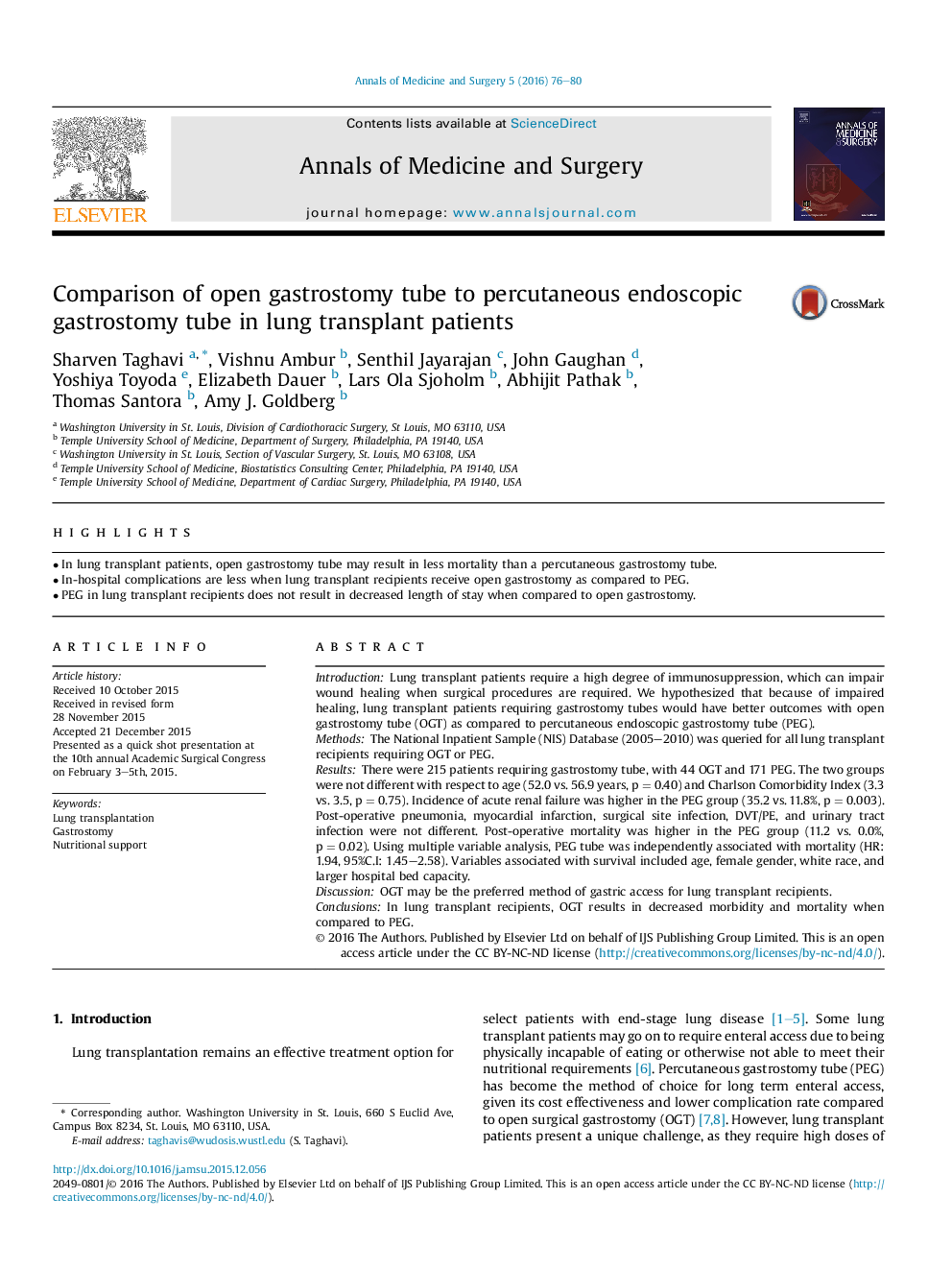| Article ID | Journal | Published Year | Pages | File Type |
|---|---|---|---|---|
| 4195295 | Annals of Medicine and Surgery | 2016 | 5 Pages |
•In lung transplant patients, open gastrostomy tube may result in less mortality than a percutaneous gastrostomy tube.•In-hospital complications are less when lung transplant recipients receive open gastrostomy as compared to PEG.•PEG in lung transplant recipients does not result in decreased length of stay when compared to open gastrostomy.
IntroductionLung transplant patients require a high degree of immunosuppression, which can impair wound healing when surgical procedures are required. We hypothesized that because of impaired healing, lung transplant patients requiring gastrostomy tubes would have better outcomes with open gastrostomy tube (OGT) as compared to percutaneous endoscopic gastrostomy tube (PEG).MethodsThe National Inpatient Sample (NIS) Database (2005–2010) was queried for all lung transplant recipients requiring OGT or PEG.ResultsThere were 215 patients requiring gastrostomy tube, with 44 OGT and 171 PEG. The two groups were not different with respect to age (52.0 vs. 56.9 years, p = 0.40) and Charlson Comorbidity Index (3.3 vs. 3.5, p = 0.75). Incidence of acute renal failure was higher in the PEG group (35.2 vs. 11.8%, p = 0.003). Post-operative pneumonia, myocardial infarction, surgical site infection, DVT/PE, and urinary tract infection were not different. Post-operative mortality was higher in the PEG group (11.2 vs. 0.0%, p = 0.02). Using multiple variable analysis, PEG tube was independently associated with mortality (HR: 1.94, 95%C.I: 1.45–2.58). Variables associated with survival included age, female gender, white race, and larger hospital bed capacity.DiscussionOGT may be the preferred method of gastric access for lung transplant recipients.ConclusionsIn lung transplant recipients, OGT results in decreased morbidity and mortality when compared to PEG.
